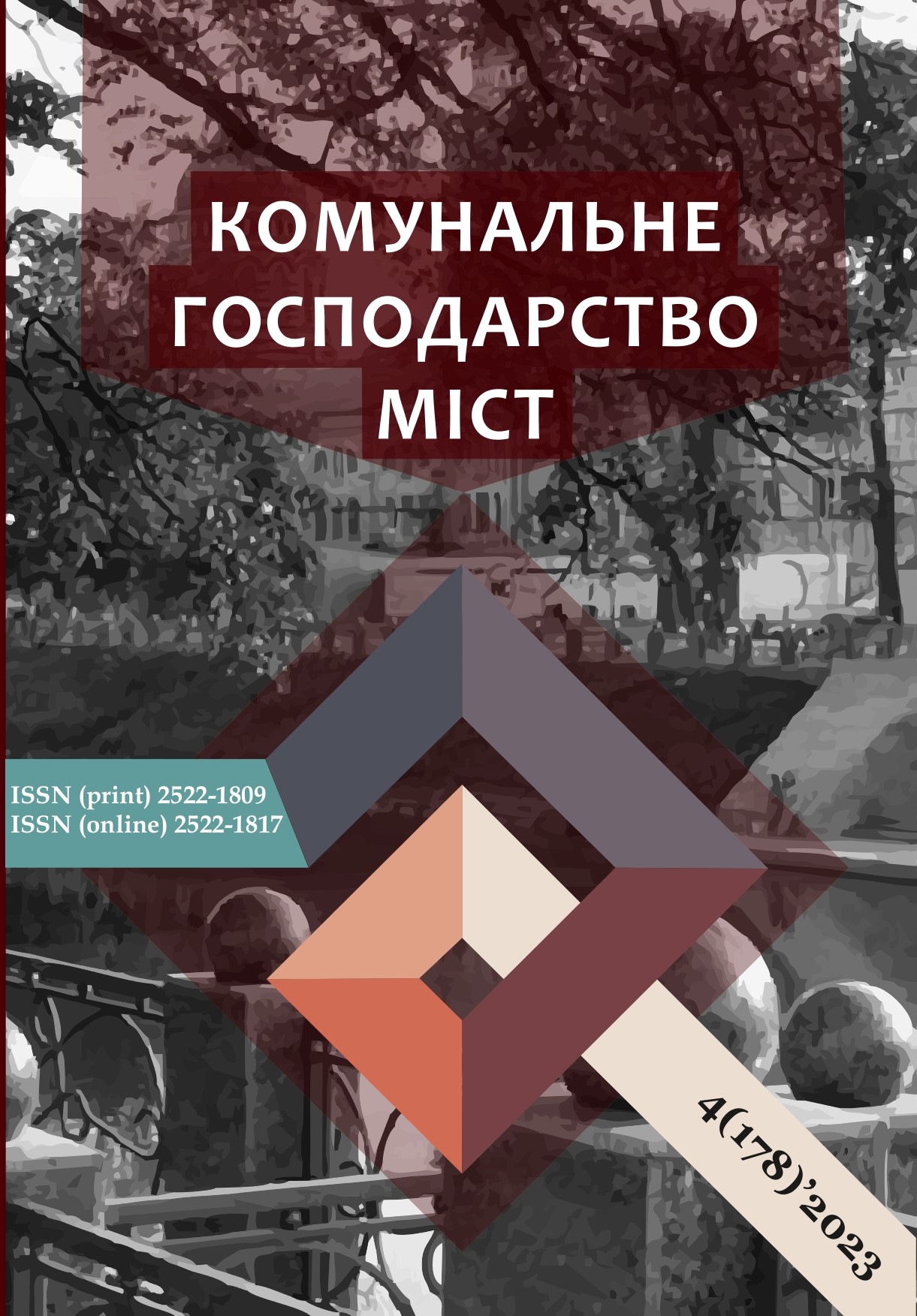COMPLEX SUPPORT SYSTEMS FOR THE ACCEPTANCE OF INNOVATIVE DECISIONS IN ENVIRONMENTAL PROTECTION
DOI:
https://doi.org/10.33042/2522-1809-2023-4-178-27-32Keywords:
environmental safety, system analysis, innovative solutions, environmental protection tools and technologies, sustainable developmentAbstract
Systematic approaches to the selection of innovative technologies for environmental protection are investigated. The features and directions of ensuring environmental safety are considered by means of a substantiated method of selecting innovative technologies. A method is used that substantiates the procedure for determining the relative importance of criteria and indicators of environmental protection technologies and methods using the program-analytical method. The basic and fundamental principles of project activities are well developed by specialists, but the practical orientation, application of aspects and algorithms for the implementation of these innovative decision support systems at the level of project activities at the regional level need further development. Decision support systems in the design of innovative environmental protection technologies will increase the complexity and effectiveness of solutions to improve environmental safety.
According to the developed approach, criteria formulated as influencing groups of factors. Relevant experts, relying on various types of information on the specific purpose and innovative ecological solutions, give their own judgments regarding the priority of the advantages of the specified criteria. Expert judgments are processed according to the formal procedure of the MAI, which is implemented on a computer, and is the basis for decision-making when choosing the innovative ecological solutions in specific conditions. The criteria hierarchical structure of innovative ecological solutions is represented by a sequence of actions that include the following stages: development of elements of a methodical approach; verification of the consistency of the proposed hierarchical structure for determining priority technologies based on the input data of several objects of settlements; obtaining data on the priority of innovative ecological solutions for implementation on these objects. The advantages of the proposed methodical approach should include the possibility to link to a single algorithm for the justification of the required decision data that differ both in their content and in the form of presentation. Implementation of complex support systems for making innovative decisions in nature protection activities will increase the complexity and effectiveness of decisions to ensure environmental safety.
References
Movchan Y. EU policy in the field of environmental protection. Ministry of Justice of Ukraine. Retrieved from: https://minjust.gov.ua/m/str_2971
Іatsyshyn А., Popov О., Artemchuk В., Kovach В., Zinovieva І. (2019) Аutomated and information decision support systems for environmental safety. ITLT, vol. 72, no. 4, pp. 286–305. https://doi.org/10.33407/itlt.v72i4.2993
Casimir P. (2015) Role of Clinical Decision Support Systems in Improving Clinical Practice. MOJ Clinical & Medical Case Reports – New York, № 2(6), P. 10.
Teliura, N.O. (2018). Development of the methodological approach to the selection of technologies for environmentallysafe water drainage in populated areas. Eastern-European Journal of Enterprise Technologies, 6(10-96), 55–63. https://doi.org/10.15587/1729-4061.2018.148689
Teliura N., Tsapko N., Khabarova H., Lomakina O., Pshenichnova O., Klochko T. (2022). Selection Methodology of Ecological Safety Priorities of Sustainable Development Goals of Urban Agglomeration. Integrated Computer Technologies in Mechanical Engineering - 2021. ICTM 2021. Lecture Notes in Networks and Systems, Springer, Cham. 367, 941–950. https://doi.org/10.1007/978-3-030-94259-5_73
Teliura, N. О. (2021). Ensuring of an ecological safety of eutrophic water bodies via the implementation of priority water disposal technologies in settlements. Wissenschaft für den modernen Menschen: innovative technik und technologie, informatik sicherheitssysteme, verkehrsentwicklung, architektur: monografische reihe «Europäische Wissenschaft». Karlsruhe. Germany: ScientificWorld-NetAkhatAV, 4, 10-19.
Saaty, R.W. (1987). The analytic hierarchy process—what it is and how it is used. Mathematical Modelling, Vol. 9 (3–5). P. 161-176. https://doi.org/10.1016/0270-0255(87)90473-8
Teliura N.O. (2019). Improving the environmental safety of eutrophied water bodies through the implementation of priority technologies for drainage in populated areas : dis. … cand. tech. sciences: 21.06.01. Kharkiv, 190 p.
Teliura N., Sorokina К., Lomakina О., Lykashevych D. (2022). Complex justification of environmentally innovative solutions regarding the reduction of production impact on the environment. Municipal Economy of Cities, 6(173), 23–30. https://doi.org/10.33042/2522-1809-2022-6-173-23-30
Patent for the invention "Method of protecting building structures from fire". Retrieved from: https://uapatents.com/4-93839-sposib-zakhistu-budivelnikh-konstruktionj-vid-pozhezhi.html
Patent for the invention "Modular multi-energy thermodynamic device". Retrieved from: https:// patentscope.wipo.int/search/en/detail.jsf?docId=US73572254&_fid=RU92377162
Patent for the invention "Method and device for several small houses". Retrieved from: https:///patentscope.wipo.int/search/en/detail.jsf?docId=US275482504&_fid=RU75850461
Downloads
Published
How to Cite
Issue
Section
License
The authors who publish in this collection agree with the following terms:
• The authors reserve the right to authorship of their work and give the magazine the right to first publish this work under the terms of license CC BY-NC-ND 4.0 (with the Designation of Authorship - Non-Commercial - Without Derivatives 4.0 International), which allows others to freely distribute the published work with a mandatory reference to the authors of the original work and the first publication of the work in this magazine.
• Authors have the right to make independent extra-exclusive work agreements in the form in which they were published by this magazine (for example, posting work in an electronic repository of an institution or publishing as part of a monograph), provided that the link to the first publication of the work in this journal is maintained. .
• Journal policy allows and encourages the publication of manuscripts on the Internet (for example, in institutions' repositories or on personal websites), both before the publication of this manuscript and during its editorial work, as it contributes to the emergence of productive scientific discussion and positively affects the efficiency and dynamics of the citation of the published work (see The Effect of Open Access).

